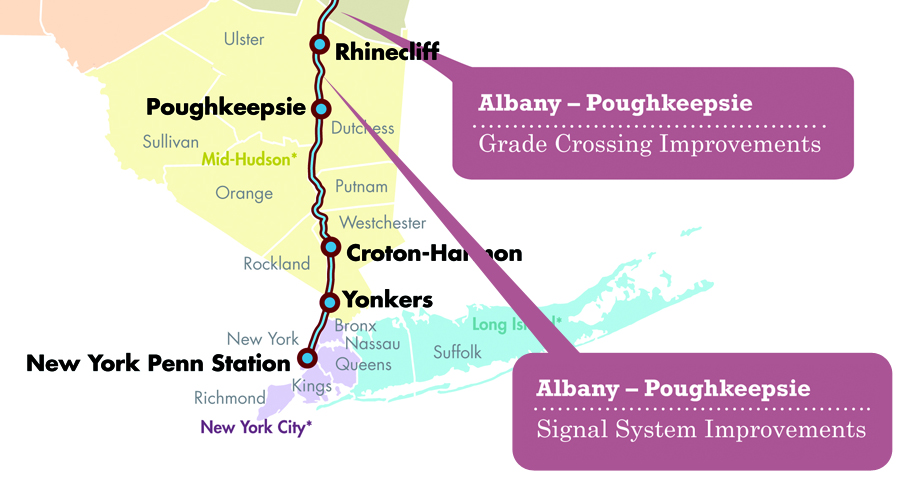
The New York State Department of Transportation (NYSDOT) and the Federal Railroad Administration have released the High Speed Rail Empire Corridor Tier 1 Draft Environmental Impact Statement (DEIS). DEIS is a detailed environmental analysis of improvements to passenger rail service along the Empire Corridor to make connections between cities faster, more frequent, and more reliable.
The 463-mile Empire Corridor runs north and south between Albany and New York City, and east and west between Albany and Niagara Falls.
The High Speed Rail Empire Corridor Program is a tiered environmental review process. The current phase, Tier 1, is a broad level conceptual assessment that evaluates the operating characteristics, physical and service level improvements, and potential environmental impacts of prospective alternatives.
The next step in the process will be selecting a preferred alternative that will be identified in the Final EIS. If any alternative except the Base Alternative is chosen as the preferred alternative, a Tier 2 environmental analysis will develop and expand individual project models and evaluate their site specific impacts.

The Empire Corridor has been designated as one of 11 high speed rail corridors nationwide, and it has been a vital rail transportation route of national significance for almost 200 years. Currently, 80 percent of New York State's 19.4 million residents live within 30 miles of the Empire Corridor.
For many decades, the railroad was operated as a four track speedway between Albany and Buffalo, carrying passenger and freight trains along express and local tracks. The Niagara Branch, extending north from Buffalo into Canada at Niagara Falls, was operated as a two track shared use corridor. Today, these lines operate as a two track and single track railroad, respectively.
Despite these constraints and service limitations, ridership is growing, and it was determined that there is a need for high speed rail. The High Speed Rail Empire Corridor Program will introduce higher passenger train speeds on the Empire Corridor and improve reliability, travel times, service frequency, and passenger amenities.



